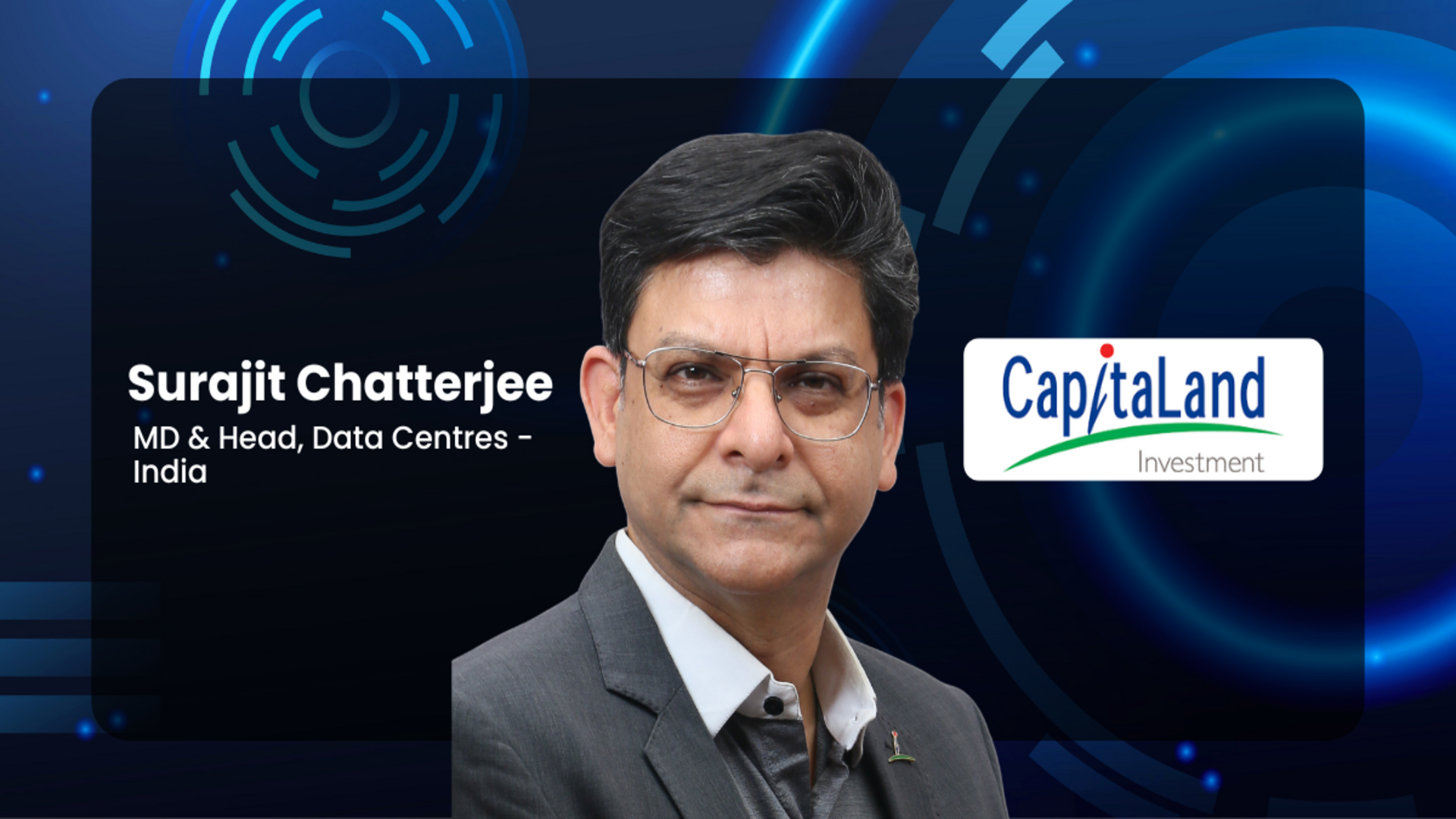The digital landscape is undergoing a seismic transformation. From AI-driven applications demanding unprecedented computational power to sustainability imperatives reshaping operational strategies, data centers face complex challenges that require fundamentally new approaches. As someone who has witnessed the evolution of India’s digital infrastructure from the front lines, I believe we are at an inflection point where adaptability is not just an advantage, it is essential for survival.
The imperative for adaptation
The traditional data center model, designed for predictable workloads and linear growth, is rapidly becoming obsolete. Today’s data centers must contend with AI applications that can consume 30 to 40 times more power than standard enterprise workloads, edge computing requirements that demand ultra-low latency, and sustainability mandates that require dramatic reductions in carbon emissions. This convergence of forces demands a new paradigm: the adaptive data center.
An adaptive data center is not merely a facility that can scale, it is an intelligent ecosystem that can reconfigure itself dynamically to meet changing demands while maintaining optimal efficiency, reliability, and sustainability. This concept goes beyond traditional notions of flexibility to embrace continuous evolution as a core design principle.
The four pillars of adaptive design
-
Robust Infrastructure Architecture
The foundation of any adaptive data center lies in its ability to support variable and evolving requirements without compromising performance. This begins with purposeful design that enables rapid deployment and flexible configurations. Modern data centers can reduce deployment timelines significantly, providing the agility needed to respond to market demands.
More importantly, adaptive infrastructure must support variable power densities seamlessly. Advanced facilities now incorporate N+N redundant power systems with dual power distribution options, enabling the accommodation of mixed workloads from traditional enterprise applications to high-density AI clusters. The ability to provide up to 2,000 kg per square metre floor loading capacity ensures that even the heaviest computational equipment can be supported without compromise.
-
Intelligent Operational Systems
True adaptability requires intelligence embedded throughout the infrastructure stack. Modern data centers leverage AI and ML not just for customer applications, but for optimizing their own operations. Advanced cooling systems with N+N redundant configurations maintain optimal conditions across variable density deployments, while intelligent energy management systems optimize power consumption in real-time.
This intelligence extends to thermal management, where sophisticated cooling technologies, including options for both air-cooling and liquid cooling solutions, ensure that facilities can adapt to the thermal requirements of diverse workloads while maintaining energy efficiency.
-
Sustainability-First Operations
Sustainability is no longer a secondary consideration, it has become a primary driver of data center design and operation. Adaptive data centers integrate sustainability into their core architecture rather than treating it as an afterthought. This includes renewable energy integration through solar panel installations, water economization systems, and high-efficiency chillers that minimize environmental impact.
The most forward-thinking facilities are pursuing LEED Gold certification and incorporating intelligent energy and infrastructure management systems that continuously optimize resource consumption. These capabilities are essential in India’s evolving regulatory environment, where sustainability credentials are increasingly important for both compliance and competitive advantage.
-
Comprehensive Connectivity Solutions
The future of digital infrastructure requires seamless integration across multiple connectivity options. Adaptive data centers must provide carrier-neutral environments with diversified fiber entry points and dedicated data shafts. This approach enables customers to optimize connectivity based on latency, cost, and performance requirements without being locked into specific provider relationships.
In India’s geographically diverse market, this capability is particularly valuable. Strategic proximity to cable landing stations, such as access to multiple landing stations, ensures low-latency connectivity while multiple connectivity options provide the redundancy needed for mission-critical applications.
Key technologies driving adaptation
These adaptive principles are enabled by several key technologies working in concert. Key examples include advanced cooling systems that provide options for both hot/cold aisle containment and liquid cooling enable higher density deployments while improving energy efficiency. Gas-insulated switchgear substations provide reliable power delivery at transmission levels, ensuring consistent performance even during peak demand periods.
Perhaps most importantly, the integration of comprehensive security systems with a minimum of seven-layer security protocols and 24/7 monitoring capabilities provides the foundation for secure, adaptive operations that can evolve with changing threat landscapes.
The Indian opportunity
India is uniquely positioned to lead the adaptive data center revolution. The country’s rapid digital transformation, supportive government policies, and growing demand for diverse computational services create an ideal environment for adaptive infrastructure deployment.
The global data center market is expected to grow significantly from 2025 to 2032 exhibiting a CAGR of 11.7% during the forecast period. The data center capacity of India was estimated at 1.1 GW in 2024. This demand is expected to reach around 6 GW by 2033. Much of the demand is expected to be met through large-format, hyperscale-ready infrastructure in core markets, alongside edge-ready capacity in Tier 2 and Tier 3 cities for latency-sensitive workloads, projecting a 25-30% CAGR for the sector.
There is an unprecedented opportunity to build adaptability into the foundation of India’s digital infrastructure. The regulatory environment is also favorable, with data center policy frameworks at both center and state levels encouraging sustainable and efficient operations. This alignment between policy objectives and operational requirements creates a powerful incentive for adaptive design.
Building for tomorrow
Realizing this adaptive vision requires addressing several implementation challenges. The complexity of managing dynamic infrastructure requires new operational models and skill sets. Traditional metrics like uptime and capacity utilization must be supplemented with adaptability and efficiency measures. Investment models must account for the higher initial costs of adaptive infrastructure while recognizing the long-term operational advantages.
Perhaps most significantly, the industry must focus on solutions that provide genuine flexibility without compromising reliability. The most successful adaptive data centers will be those that combine robust engineering with operational excellence.
The data centers we build today will serve India’s digital economy for decades to come. By embracing adaptive design principles now, we can ensure that these facilities will remain relevant and efficient as technology continues to evolve. This is not just about future-ready infrastructure, it is about creating the foundation for India’s continued leadership in the global digital economy.
The transition to adaptive data centers represents both a significant challenge and an extraordinary opportunity. Organizations that embrace this transformation will find themselves with competitive advantages that compound over time: lower operational costs, improved sustainability performance, greater customer satisfaction, and the ability to capitalize on emerging opportunities as they arise.
As we stand at this critical juncture, the question is not whether adaptive data centers will become the norm, but how quickly we can make this transformation. The organizations and countries that act decisively will define the next era of digital infrastructure, while those that wait will find themselves struggling to catch up.
At CapitaLand Data Centre (CLDC), we are already implementing many of these adaptive principles across our facilities in Mumbai, Hyderabad, Chennai and Bangalore. Our comprehensive approach, from N+N redundant power systems and advanced cooling solutions to carrier-neutral connectivity and comprehensive security protocols, exemplifies the kind of robust, flexible infrastructure that India’s digital transformation demands. Through strategic investments in sustainability initiatives including LEED Gold certification targets, intelligent energy management, and renewable energy integration, we are not just building data centers; we are creating the adaptive digital infrastructure foundation that will power India’s next chapter of technological leadership.
The future of data centers is adaptive, intelligent, and sustainable. The time to build that future is now.
**This piece first appeared in Issue 10 of W.Media’s Cloud & Datacenters magazine. Click the image below and head to page 22-23 to read the story.



